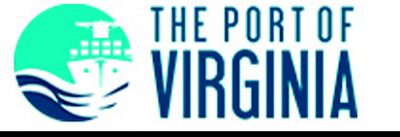
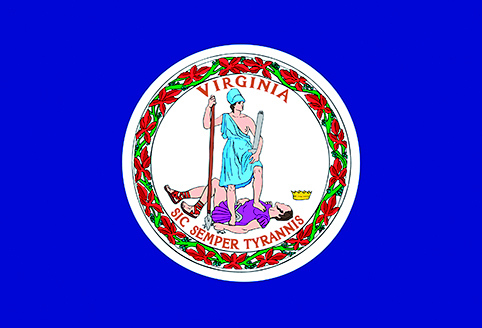 Hampton Roads lies at the confluence of the James, Elisabeth and Nansemond rivers at the entrance to Chesapeake Bay, and is the anchorage point of Panamax container ships and large ro-ros waiting to berth at the four container and ro-ro terminals at Norfolk, as well as Capesize, Kamsarmax and Panamax bulk carriers waiting to load coal at Newport News and Norfolk. The Port of Virginia occupies some 1,864 acres of land and has six terminals with almost 20,000 feet of quay and an alongside depth of up to fifty feet. The Newport News Marine Terminal (NNMT) of the Port of Virginia is located on the northern side of Hampton Roads and is a breakbulk and ro-ro facility. The export totals of the port for 2015 were 37.613 Million metric tonnes, and imports totalled 9.816 Million metric tonnes, making Norfolk and Newport News one of the biggest ports on the U.S. Eastern Seaboard, with a 14% share of the east coast port market. Norfolk also has the largest naval base in the world, with the biggest American aircraft carriers based on the Elisabeth River, which is six miles long and two miles wide at its entrance to Chesapeake Bay.
Hampton Roads lies at the confluence of the James, Elisabeth and Nansemond rivers at the entrance to Chesapeake Bay, and is the anchorage point of Panamax container ships and large ro-ros waiting to berth at the four container and ro-ro terminals at Norfolk, as well as Capesize, Kamsarmax and Panamax bulk carriers waiting to load coal at Newport News and Norfolk. The Port of Virginia occupies some 1,864 acres of land and has six terminals with almost 20,000 feet of quay and an alongside depth of up to fifty feet. The Newport News Marine Terminal (NNMT) of the Port of Virginia is located on the northern side of Hampton Roads and is a breakbulk and ro-ro facility. The export totals of the port for 2015 were 37.613 Million metric tonnes, and imports totalled 9.816 Million metric tonnes, making Norfolk and Newport News one of the biggest ports on the U.S. Eastern Seaboard, with a 14% share of the east coast port market. Norfolk also has the largest naval base in the world, with the biggest American aircraft carriers based on the Elisabeth River, which is six miles long and two miles wide at its entrance to Chesapeake Bay.
History Of Norfolk (Virginia)
The Powhatan Native Americans had fished and hunted the peninsulas of Virginia for more than two thousand years before Englishman George Smith arrived with a group of settlers in 1607. A clash of cultures followed after some friendly exchanges between the Powhatan and the settlers, leading to attacks on the settlers in 1622, when 347 men, women and children were killed by the Powhatan. Over the next twenty years, severe reprisals were meted out to the Native Americans, but it was as much the smallpox and other diseases brought by the settlers that had almost destroyed the Powhatan by 1646.
The name of Norfolk was given to the new settlement after 1836 by Adam Thoroughgood after his birthplace of Norfolk in East Anglia, and when Norfolk County was split into two parts, Lower Norfolk County became the site of the present Port of Norfolk, which was incorporated in 1705. Norfolk Half Moone Fort had been completed at this time after the Port of Norfolk purchased twenty hectares of land for a large quantity of tobacco from the Native Americans. Exports of tobacco and other crops back to Britain saw the port prosper, but British rule over the area came to an end in 1775 during the American Revolutionary War after 168 years. British forces were defeated at the Battle of Williamsburg and fell back on Norfolk and held it for a short while before abandoning it and shelling the town from three British frigates in 1776. Nothing remained except the Episcopal Church of St. Paul.
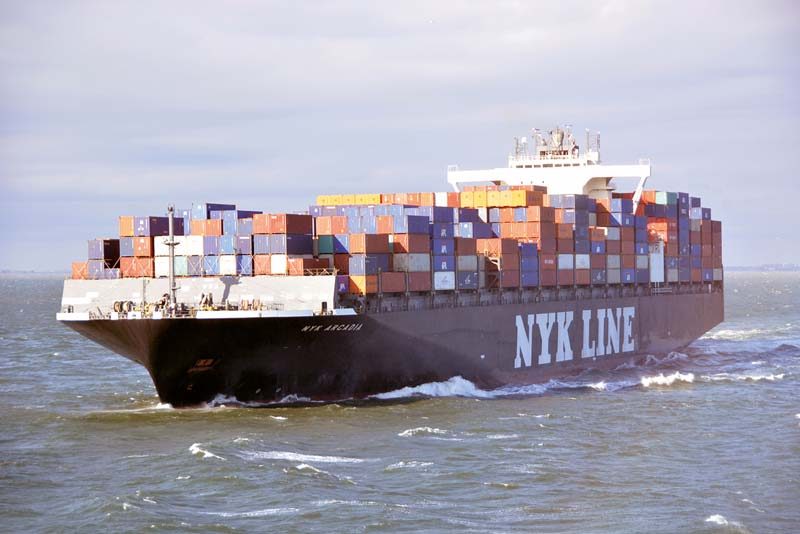
Battle Of Hampton Roads
The Port of Norfolk joined the Confederate Secessionary Forces fighting the Unionist forces in 1861 at the start of the American Civil War. The Unionist ironclad Monitor with its rotating gun turret and side lever steam engine fought a naval duel over two days on March 8th and 9th 1862 with the Confederate ironclad Virginia, built from the remnants of the fire damaged Unionist vessel Merrimac, in Hampton Roads. The battle was part of the effort by the Confederate forces to break the Union blockade of Norfolk and Richmond from international trade.
On the first day, the Confederate fleet consisted of the ironclad Virginia and several other warships. Virginia destroyed two ships of the Union fleet, USS Congress and USS Cumberland, but the action was halted by darkness and a falling tide when she was about to destroy a third Union vessel, which had run aground. On the second day, Virginia was engaged by the ironclad Monitor, which had arrived during the night to protect the grounded vessel. The two ironclads fought each other for three hours, with neither able to inflict significant damage on the other. They did not fight again, and the blockade remained in place, with casualties on both sides amounting to 339 killed and 125 wounded over two days.
This gun duel, the first between ironclad warships in the world, was thus a draw. Major artefacts of Monitor, and a model of the ironclad, stand outside the excellent Mariners Museum at Newport News, with excellent interactive displays of the battle, and further information and opening times at www.marinersmuseum.org. The Mayor of Norfolk surrendered the town to the Unionists later in 1862, and the Port of Norfolk was under martial law until the end of the war in 1865.
The Twentieth Century
In 1907, on the three hundredth anniversary of the first settlers reaching the area, there was a double celebration with the Norfolk Exposition and Naval Review, which led to the start of building the biggest naval base in the world. The Virginian Railway also arrived in the port in the same year of 1907, and ten years later the Norfolk Naval Base and Naval Air Station played an active role for the United States when it entered World War I against Germany. Hampton Roads and the Elisabeth River were a hive of naval activity, which continued throughout the century during World War II, the Korean War and the Vietnam War.
A regular overnight passenger service from Norfolk (Virginia) to Washington (DC) ran for almost sixty years until 1948 by the Norfolk and Washington Line, beginning with the ‘hurricane deckers’ Norfolk and Washington of length 246 feet and built in 1891. Three more ‘hurricane deckers’ ran the service in the 1930s and early 1940s in District of Columbia 2,123/24, Northland 2,056/11 and Southland 2,081/08, the latter built by Newport News Shipbuilding with a triple expansion steam engine from the builders. Northland and Southland crossed the Atlantic to act as accommodation vessels in Scotland for troops training for D-Day and they never returned to Norfolk. District of Columbia then ran with Meteor, of length 312 feet and completed in 1899 as Chester W. Chapin, until District of Columbia had a serious collision with the tanker Georgia off Newport News in October 1948 that killed one person, the company then decided to cease operations. Meteor made the last overnight service from Chesapeake Bay to the Potomac River and the capital in late 1948 and was then broken up.
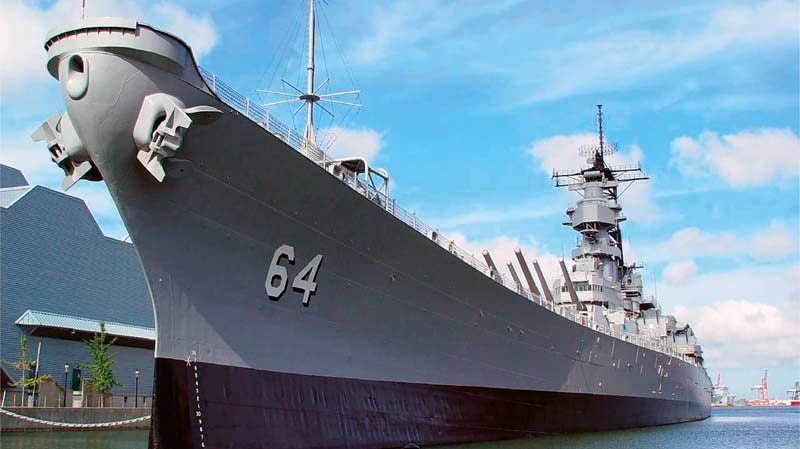
Ford began production of its Model T car on 20th April 1925 at its new Norfolk car plant, with S. Heth Tyler, Mayor of Norfolk, driving the first car off the production line. The plant continued to make cars and trucks, except for the war years of 1942/46 when it became the Naval Landing Force Equipment Depot, until closure in 2007. Cars were exported by the old fashioned ‘crane and cradle’ method until a new auto export and import facility was built at Norfolk International Terminal (NIT).
Five Star U.S. Army General Douglas MacArthur (1880-1964) was a son of Norfolk (Virginia) and defended the Philippines against the Japanese during World War II, and after a bitterly fought war took the surrender of the Japanese High Command in Tokyo harbour on an American battleship on VJ Day, 14th August 1945. He is commemorated by a large memorial in Norfolk Centre just off the Elisabeth River.
The Port of Norfolk was able to greatly expand in post-war years with the advent of the Interstate Highway System, and several adjacent communities were annexed by the City of Norfolk. Bridges and tunnels were built to link Norfolk across the Elisabeth River to Portsmouth as well as to Newport News across Hampton Roads. A very long tunnel and bridge was later built across the outer part of Chesapeake Bay to connect Virginia Beach near Norfolk with the communities in Maryland.
Two important customers were added to the port in the 1980s in Evergreen Container Line and the Nissan Motor Company. A new berth was added to the Port of Norfolk International Terminals, and a new large warehouse, paved container storage area, and container gantry cranes were commissioned. The Port of Norfolk is a hub port with thirty international shipping lines offering direct and dedicated services to over two hundred worldwide ports, and in an average week forty large container ships and ro-ro vessels arrive at the six terminals of the port.
The Half Moone Cruise Centre was planned in the late twentieth century and opened in 2007, named after the fort built on the same site in 1673 at Norfolk. The terminal building and meeting centre also contains one of the biggest collections of ocean liner memorabilia in the United States. Cruise ships of Carnival Cruise Line, Royal Caribbean International (RCI), Phoenix Reisen, and other cruise lines berth here. The cruise berth is on one side of the Nauticus Celebration Centre, with the preserved battleship Wisconsin (BB – 64) on the other.
Trade Statistics For 2015
The Port of Norfolk, also with a terminal in Newport News, is managed by the Virginia Port Authority (VPA) under the direction of the Secretary of State Transportation Department. The VPA owns four general cargo terminals and is responsible for the marketing of the marine terminal facilities. Two other privately owned terminals at Norfolk use the Port of Norfolk logo and marketing under license, and coal is exported through the privately owned Dominion Terminal Associates and Kinder Morgan’s Pier IX facilities in Newport News, but not included in the Port of Norfolk trade statistics, and the Lamberts Point facility of the Norfolk Southern Railroad in Norfolk. Thus, the total trade throughput in the Hampton Roads area in 2015 was as follows:-
Exports (Metric Tonnes)
Coal shipped at
- Lamberts Point 26,503,410
- Forestry products 2,477,570
- Grain, seeds, fruit 2,156,350
- Flatpack wooden products 1,696,110
- Animal feed 1,541,090
- Cereals 913,410
- Plastics 650,610
- Paper, paperboard 590,790
- Fertilisers 425,180
- Iron and Steel 395,990
- Miscellaneous 262,940
- TOTAL 37,613,450
Imports (Metric Tonnes)
- General cargo 4,311,150
- Boilers, machinery, reactors 1,035,620
- Salt, sulphur, stone 713,140
- Forestry products 680,190
- Beverages, spirits, vinegar 545,080
- Vehicles 493,540
- Plastics 485,790
- Cement and plaster 419,190
- Fuel oil, vegetable oil 395,200
- Electrical products 374,640
- Iron and steel 362,390
- TOTAL 9,815,930
There are around 2,700 vessel calls per annum with container throughput at around 2.75 MTEU per annum.
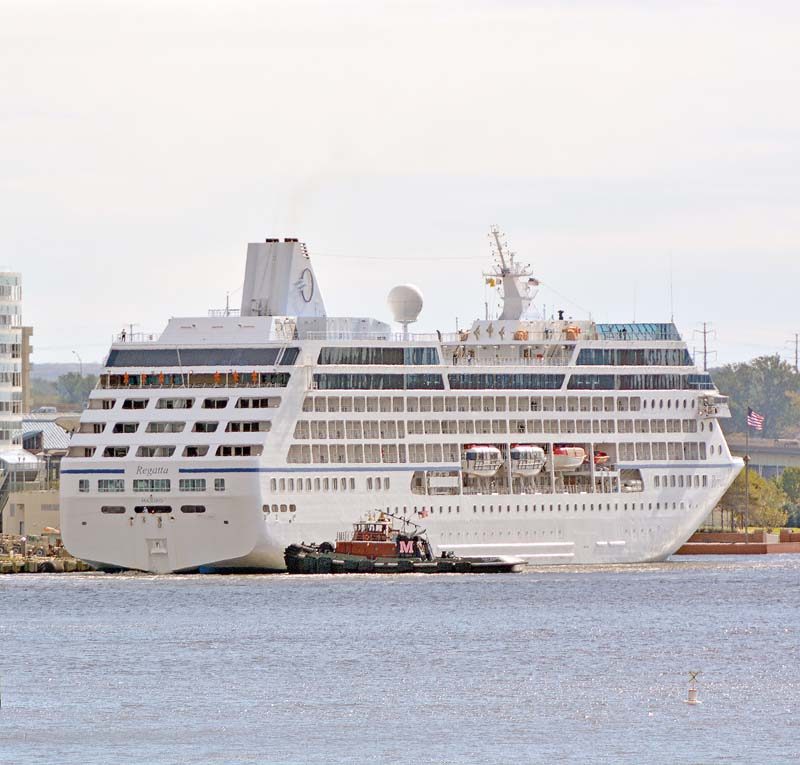
PORT OF NORFOLK MARINE TERMINALS
NORFOLK INTERNATIONAL TERMINALS (NIT)
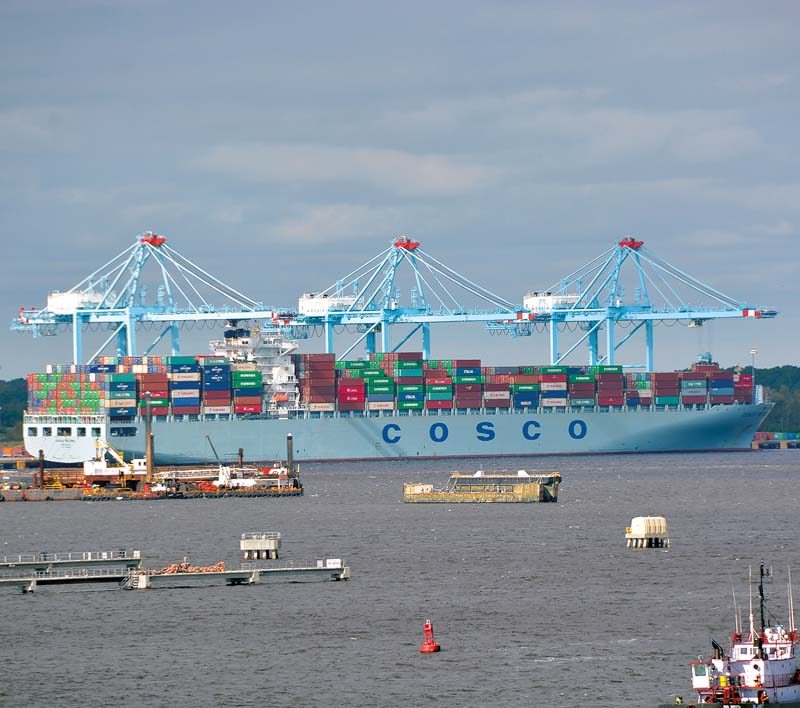
This is the largest of the Norfolk terminals with fourteen Super Post Panamax gantry cranes able to load or discharge containers with an outreach of 26 containers from vessels up to 14,000 TEU in size. The terminal occupies a huge 567 acres of land with 6,630 feet of quay and an alongside depth of fifty feet. The South Terminal is of 272 acres in area, the North Terminal is of 245 acres in area while the Norfolk Southern Railroad yard is of 50 acres. NIT is located on the Norfolk side of the Elisabeth River towards its entrance with Chesapeake Bay.
A double stack container train leaves every day for the Mid West States, and there is also substantial working of containers by rail throughout the State of Virginia. Thousands of daily truck moves are processed through seventeen interchange lanes and two transfer zones, with a further nine interchange lanes under construction. Trucks have easy access to four U.S. Interstate routes leading north, south or west.
Container ships to be seen at this and other Norfolk terminals are owned by Evergreen, Hamburg Sud, Hapag Lloyd, Maersk Line, MSC, CMA-CGM, NYK. OOCL, Alianca, APL, Mitsui OSK, Atlantic Container Line, ‘K’ Line, Turkon Line, Zim Line, Yang Ming, China Shipping Container Line (CSCL), United Arab Shipping Corporation (UASC), COSCO, CSAV, Hyundai, Libra Line and many other lines, as well as the coastal shipments of Columbia Coastal and Richmond Barge Company.
Newport News Marine Terminal (Nnmt)
This is the main breakbulk and ro-ro facility of Virginia Port Authority occupying 165 acres of land at Newport News, with 60 acres of open storage and 968,000 square feet of warehouse. The Auto Import Yard ‘A’ is of 10 acres, while the Auto Import Yard ‘B’ is of 15 acres. Giant car carriers of Wallenius Wilhelmsen, Mitsui OSK, Nissan Motor Company, Rederi A/B Transatlantic, Hoegh Autoliners, MOL Car Carriers and ACL are to be seen here regularly. Thirty other lines call here on inducement, and there is a permanent ro-ro ramp for the loading and unloading of construction and agricultural equipment. The terminal is located adjacent to the huge coal exports of around fifty million tonnes per annum from Newport News handled by the privately owned Dominion Terminal Associates and Kinder Morgan’s Pier IX facilities, and these coal export totals are not included in the Port of Norfolk annual trade statistics.
Prior to Virginia port unification, this terminal was owned by the Peninsula Ports Authority of Virginia (PPAV), and was served by the Chesapeake and Ohio Railroad, which operated it. In 1971, the terminal was renamed the Newport News Marine Terminal (NNMT) with the large new Pier C completed shortly afterwards. In 1990, NNMT received a £10 million upgrade with a new entrance complex, interchange, administration building, and 27 acres of paved cargo space and an extension to Pier C. The car import and export operations were relocated from NIT to NNMT in 1994. The terminal today has an alongside depth of 45 feet, four container cranes, 42,720 feet of rail track operated by the CSX Railroad, and storage for over 1,000 TEU of containers and 1,210 truck chassis. During the aftermath of Hurricane Sandy in 2012, many cars were handled after diversion from badly devastated ports.
Richmond Marine Terminal (RMT)
This terminal has a wharf of 1,570 feet in length for handling dry containers, reefer containers, break bulk and bulk cargoes. The terminal is located along the west bank of the James River in Richmond and has 80 acres of secured area standing on 120 acres of land. The terminal is owned by the City of Richmond and leased by the Virginia Port Authority and has 300,000 square feet of warehousing. The James River Barge Service, a weekly container on barge service from Hampton Roads to Richmond, provides an alternative to congested roads and highways.
Portsmouth Marine Terminal (PMT)
This terminal is located on the west bank of the Elisabeth River on three wharves of a total length of 3,540 feet for handling container, ro-ro and breakbulk cargo. The 287 acre terminal is serviced by the Norfolk Southern and CSX Railroads, and there is a 44 acre open container yard with an adjacent warehouse. The Virginia Port Authority is currently assessing the best use of this terminal as two other terminals are operating at full capacity, in order to provide a plan for the future best economic development of Virginia.
Virginia International Gateway (VIG)
This is a privately owned terminal located along the Elisabeth River and opened in July 2007 as the largest privately owned terminal in the country. Phase I handles one million TEU of container handling on 231 acres, while Phase II will add another one million TEU of container handling on a total of 575 acres. Two or three large container ships berth at this quay of length 3,205 feet with an alongside depth of fifty feet, the same depth of the navigation channel. The terminal is equipped with eight Super Post Panamax gantry cranes, as well as high stackers and a double stack intermodal system to the Norfolk Southern and CSX Railroads. The 65 acre container yard has thirty semi automated rail mounted gantry (RMG) operated storage space for dry containers, reefer containers, and oversize loads. The terminal has 13,200 feet of internal rail track with a six track intermodal yard working to the two railroads.
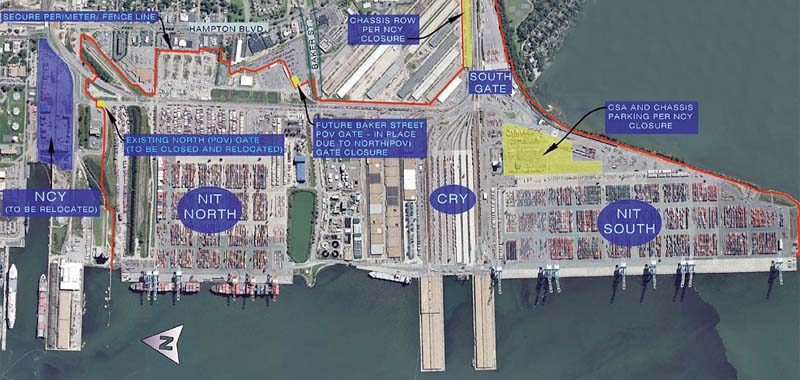
Virginia Inland Port (VIP)
This intermodal container transfer facility is located inland in Warren County in Virginia and occupies 161 acres of land around sixty miles west of Washington (DC). The terminal is thus 220 miles from the Port of Norfolk and provides rail services to all of North Eastern U.S.A. and New York/New Jersey and Harrisburg (Pennsylvania) on 17,280 feet of terminal track. A fast double stack Norfolk Southern container train runs five days per week from the terminals in Norfolk and Portsmouth to this inland VIP terminal. Major American commodity brands use the service as a distribution centre for their products.


Lamberts Point Coal Terminal
This major coal exporter is owned and operated by the Norfolk Southern Railroad and is located half way along the Elisabeth River on the Norfolk (east) side. The heart of the terminal is Pier 6, which has two massive shiploaders that permit the facility to load two Capesize bulkers simultaneously. Twin Tandem rotary dumpers feed the shiploaders for a combined dumping capacity of 8,000 tonnes per hour, with vessel loading rates augmented by two surge silos. Pier 6 is 1,850 feet in length and both loading berths and the layby berth are dredged to fifty feet. The shiploaders can accommodate Capesize bulkers with a beam of 174 feet and airdraft of 74 feet and operate 24 hours a day and seven days a week. Coal blending for both steam coal and metallurgical coal applications is paramount for customer requirements, and a thawing system for rail wagons ensures that the terminal can operate in the most severe winter weather. There is no dumping of coal to ground, all coal is tipped directly from wagon to ship.
This Norfolk Southern Railroad terminal serves the U.S. domestic and global energy needs using coal from mine operators in Virginia, Kentucky and Pennsylvania, with the Railroad having a total of nine shipment terminals throughout the country. The Lamberts Point facility and the two coal export terminals across Hampton Roads at Newport News are the major coal exporting area of the U.S.A., with coal first shipped at Lamberts Point in 1884 at Pier 1. Piers 2, 3, 4 and 5 soon followed, and Pier 6 opened in 1962 and had exported one billion tonnes of coal by 1999.
Future Developments
The congested state of the Elisabeth River at Norfolk of terminals using giant commercial vessels, and the aircraft carriers of the U.S. Navy at Norfolk Navy Yard, has meant that future development will be at the outer western part of the Elisabeth River on reclaimed land at Craney Island. The name of the island is derived from the fact that the early English settlers on the Elisabeth River were impressed with the great number of what they mistakenly believed to be cranes but in fact were white and blue herons. Craney Island was of much strategic importance in the War of 1812 and the American Civil War.
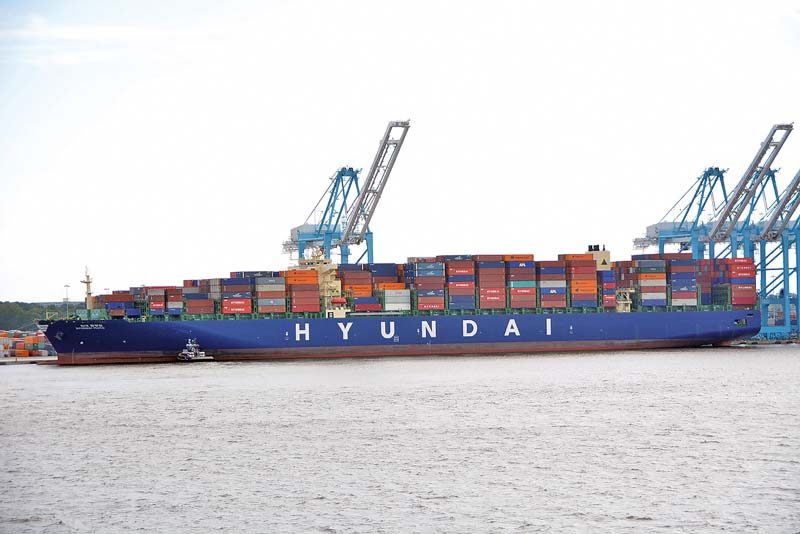
The need for additional container ship terminals at the Port of Norfolk is necessitated by the global growth of containerisation and the extra capacity coming through the Panama Canal with its widened and deepened ‘third lane’. After long study, the best option at Norfolk was reclamation and dredging of land at Craney Island in a northerly direction into Hampton Roads. The project serves as a dual purpose project of extending the life of Craney Island as a dredge disposal area, and reclamation of land to provide a doubling of container throughput at the Port of Norfolk. The Port in conjunction with the U.S. Army Corps of Engineers will invest capital to construct this new facility.
The Craney Island Marine terminal will be a state of the art automated container terminal with the capability to handle half of its total container volume by rail. The existing Commonwealth Rail Line will be extended from U.S. State Route 164 to Craney Island through a project known as the Port of Virginia Gateway. The Norfolk Southern and CSX Railroads will provide the double stack rail capacity, and the terminal will serve Super Post Panamax container vessels using the latest fast lift container gantry cranes and automated container yard equipment. Investment will also be made to update the Richmond Marine Terminal, the Portsmouth Marine Terminal, and the Newport News Marine Terminal for non container cargoes. NIT will make use of advanced shore equipment in the future.
Norfolk Navy Yard
This is the largest naval base in the world, occupying 1,275 acres or 5.2 square kilometres, and has a continuous history of 250 years. Norfolk Navy Yard (NNY) was founded in 1767 as the Gosport Shipyard and is the largest and oldest facility owned by the U.S. Navy. It is located on the west bank of the Elisabeth River at Portsmouth, opposite Norfolk, on the Southern Branch of the river. The yard was destroyed during the American Revolutionary War, with the first dry dock completed in the 1820s, but was destroyed again during the American Civil War. The shipyard was again rebuilt from ruins, and until 1917 the yard was used both for shiprepair and ship construction. The Norfolk Navy Yard served as the official homeport of the U.S. Navy for ships stationed in the Hampton Roads area, until Norfolk Naval Station and Norfolk Navy Air Station were completed.
The output of NNY by 11,000 employees during World War I was prodigious and included battleships and cruisers of various classes as well as smaller warships. The shipyard underwent massive expansion during World War II to enable a massive total of 8,850 vessels to be built using a workforce of 43,000 employees. After World War II, NNY shifted from being a ship construction facility to an overhaul and repair facility. The last battleship Kentucky (BB-66) had her completion suspended in 1950, with the last two warships from the yard being two wooden minesweepers completed during the Korean War. NNY provides repair and overhaul facilities for large aircraft carriers, amphibious vessels, submarines, guided missile cruisers, destroyers and small naval craft. The yard in recent years has focussed on nuclear powered warships, and is one of the very few facilities on the Eastern Seaboard capable of drydocking nuclear powered aircraft carriers. The Newport News Shipbuilding Yard, now Huntingdon Ingalls Industries (HII), located across Hampton Roads at Newport News can also drydock nuclear powered aircraft carriers.
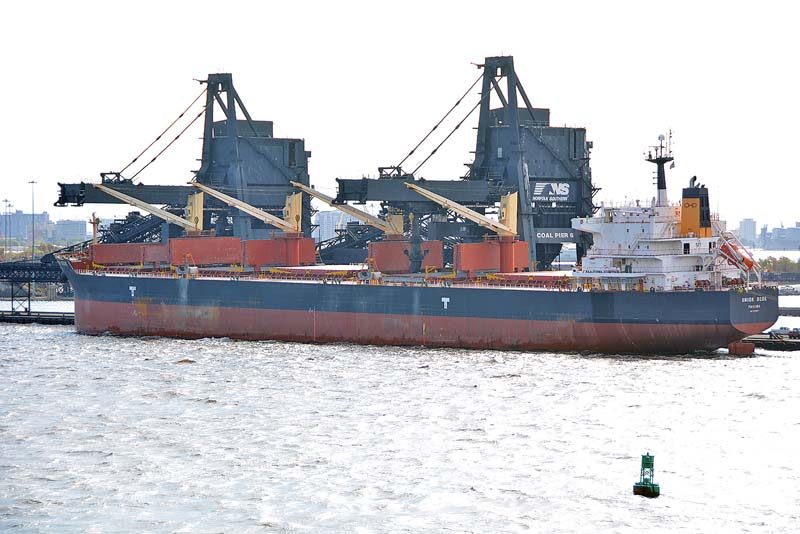
NNY is still very much a major U.S. Navy facility today, and in 2016 developed a new submarine oil storage tank cleaning tool in conjunction with Penn State University. The 350 tonne capacity hammerhead crane on the fitting out quay is used for lifting heavy main engines, guns and military equipment. Outside the yard, on the nearby Portsmouth Old Town waterfront, is the Portsmouth Naval Shipyard Museum, which features displays and artefacts from its history.
Shipbuildng and Shiprepair
Newport News Shipbuilding (NNS) has a famous reputation for building large ocean liners as well as nuclear powered U.S. Navy aircraft carriers and submarines for 130 years. It was founded in 1886 as the Chesapeake Dry Dock and Construction Company and has since built more than eight hundred ships, the first being the tug Dorothy, which has been lifted from the water and preserved and stands outside the gates of the yard today. The yard occupies over 550 acres and draws its massive workforce today from all over Norfolk, Portsmouth and the lower Virginia Peninsula, but also communities south of Hampton Roads and the James River as well as some north eastern counties of North Carolina.
Industrialist Collis P. Huntington (1821-1900) provided financial funding to complete the famous Chesapeake and Ohio Railroad (C. & O.) from Richmond (Virginia) to the Ohio River in the early 1870s. The C. & O. Railroad owned steamers such as Virginia of 635 grt built in 1902 at Richmond (Virginia), and was soon transporting massive amounts of coal by rail to the first coal exporting piers built at Newport News. The expansion of Newport News as a community and shipbuilding town was the next priority of Collis P. Huntington, building his shipyard in 1886, which had completed three warships for the U.S. Navy by ten years later. The Newport News yard built six of the U.S. Navy’s 22 Dreadnought battleships between 1907 and 1923, and was equipped with a Simpson’s Basin Dry Dock capable of docking a vessel 600 feet in length and drawing 25 feet of water at any state of the tide.
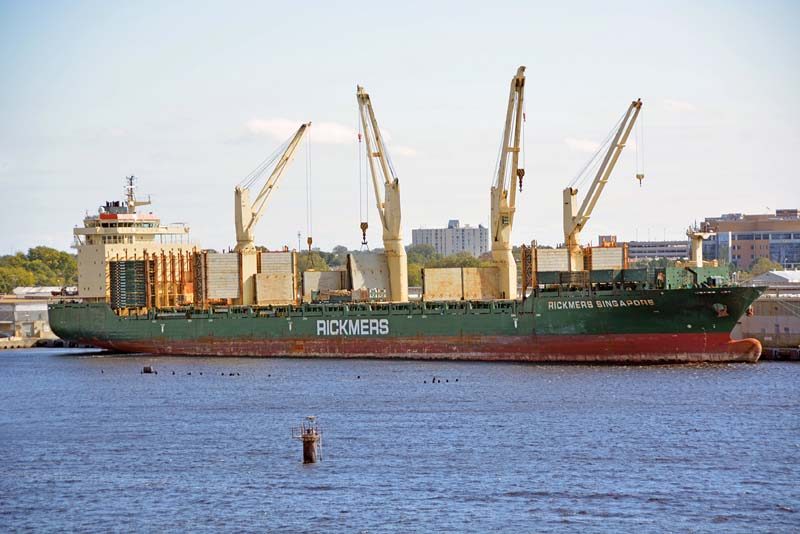
In 1910, the yard had nine shipbuilding berths of up to 900 feet in length, and three drydocks of lengths 861 feet, 630 feet and 585 feet with a maximum annual output of 100,000 tonnes of ships powered by engines from its own Engine Works with a maximum output of 60,000 horse power per annum. Passenger liners now figured in the yard output including the passenger steamer Medina for the Mallory Steamship Company in 1914, which lived on as the motor ship Doulos to a ripe old age. The twin funnelled sisters Korea and Siberia of 11,785 grt were completed by the yard in 1901 for Pacific Mail Line, and City of St. Louis of 5,425 grt was completed in 1910 for Savannah Line.
The giant former German Transatlantic liner Vaterland of 1913 had been laid up at the start of World War I in New York, and was then seized by the U.S. Government in 1917 on their entry into the war and converted into a troopship. She was sent to the Newport News yard in 1919 to have all of her wiring, plumbing and interior accommodation stripped out and redesigned as the liner Leviathan of United States Lines, emerging as their flagship in 1923. The passenger steamer sisters George Washington and Robert E. Lee of 5,184 grt were completed in 1924 for the Old Dominion Line, followed by the sisters Cherokee and Seminole of 5,896 grt for Clyde Mallory Lines.
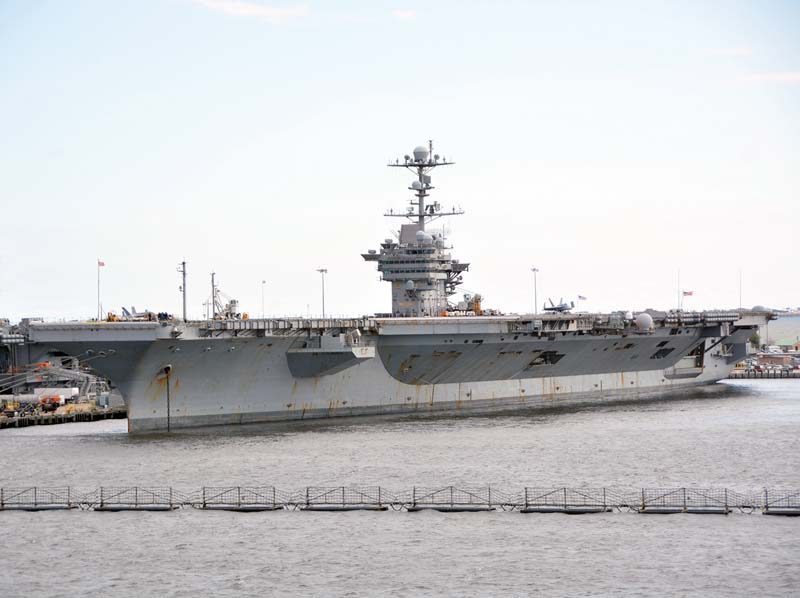
The yard launched the first turbo-electric liner in the world as California of 17,833 grt in 1927 for the Panama Pacific Line, and she was the largest liner yet built in an American yard. Virginia of 1928 and Pennsylvania of 1929 were her sisters from the yard, followed by two larger turbo-electric liners for the Dollar Steamship Company in President Hoover of 21,936 grt in 1930, and her sister President Coolidge in 1931. The New York and Cuba Mail Steamship Company ordered two sisters, Morro Castle and Oriente of 11,520 grt, for completion in 1930 for the New York to Cuba run. Three passenger cargo-liners were completed during 1931/33 for the United Fruit Company as Talamanca, Chiriqui and Jamaica. Two passenger sisters of 5,236 grt were completed in 1932 for the Colombian Line as Haiti and Colombia. The long lived and famous liner America of 26,494 grt was completed for United States Lines in July 1940 but was soon converted into a troopship by the yard and renamed USS West Point.
The Newport News yard completed a dozen large Essex and Midway class aircraft carriers during World War II, as well as the battleship Indiana, among its huge wartime output, earning the yard an ‘E’ pennant for excellence in shipbuilding. The iconic United States Lines liner United States 53,329 grt was completed in June 1952 and held the Blue Riband of the Atlantic for many years for her prodigious turn of speed, and she is still afloat today and testimony to the workmanship of the yard. The yard in conjunction with Westinghouse and the U.S. Navy built a prototype nuclear reactor for an aircraft carrier and designed the aircraft carrier Enterprise in 1960, having launched its first U.S. nuclear powered submarine Shark and the ballistic missile submarine Robert E. Lee during the previous year.
In the 1950s, the yard had nine slipways, eight fitting out piers and five dry docks of lengths 1,100 feet, 960 feet, 862 feet, 650 feet and 536 feet, and built supertankers, some of which were later converted into FPSOs for the offshore oil industry. In the 1970s, the yard built two ULCCs of 192,707 grt and 390,000 dwt, and also constructed three liquefied natural gas carriers for Shell Oil and Cabot LNG Shipping Corporation of Boston in Galeomma, LNG Delta and Matthew during 1977/79.
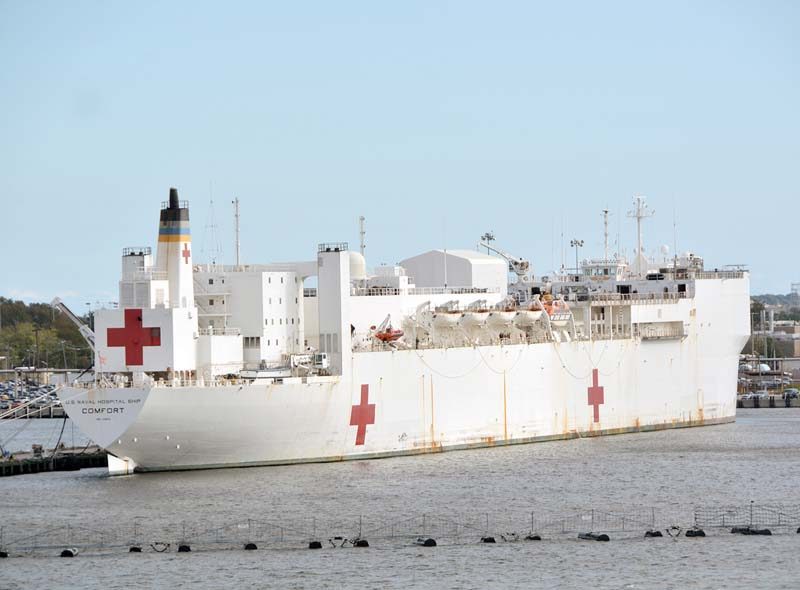
The yard completed the first of six ‘Double Eagle’ class of double hull tankers of 46,000 dwt for ExxonMobil as S/R American Progress on 10th September 1997, the first commercial ship from the yard in nineteen years. The class had an overall length of 600.5 feet and a moulded beam of 105.8 feet, with the next three examples ordered by Eletson Holdings of Greece and launched as Agathonissos, Makronissos and Dhokos. Agathonissos was launched on 3rd February 1998 as the first vessel built by an American yard for a foreign flag customer since 1957. The last two tankers of the class were completed for Seabulk International Inc. as HMI Ambrose Channel and HMI Brenton Reef in May 1999, but were quickly renamed with ‘Seabulk’ prefixes to their names to join the trio of Eletson tankers also sold to Seabulk International Inc. and renamed with ‘Seabulk’ prefixes to their names. The last three hulls of this projected class of nine tankers were cancelled, as the yard had made a loss of $200 million on the contract.
The U.S. Navy recent output from the Newport News yard has included four ‘Nimitz’ class nuclear powered aircraft carriers and several ‘Los Angeles’ class nuclear powered attack submarines, and it has produced only warships since 1999. The fifth Nimitz class aircraft carrier was under construction in 2016 as USS Abraham Lincoln, as well as two ‘Virginia’ class nuclear submarines in USS Indiana and USS Washington. This famous yard began the deactivation of the first nuclear powered aircraft carrier Enterprise, which it also built, in 2013, and continues to operate today as Huntington Ingalls Industries (HII).
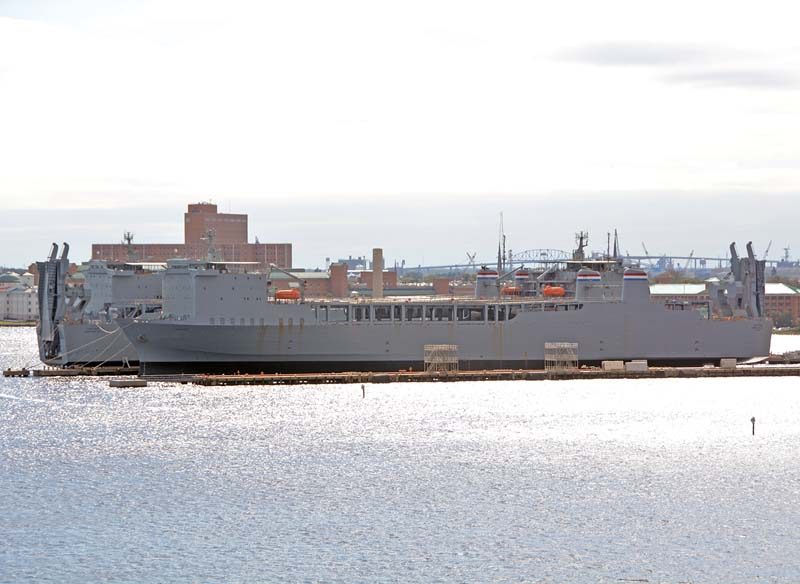
Another famous shipyard prospers today in Norfolk (Virginia) as the Norfolk Shipbuilding and Drydock Corporation (Norshipco). It was founded in 1915 and grew into a major shiprepair facility with three floating docks of length 567 feet, 316 feet, and 126 feet, with the biggest floating dock having a lifting capacity of 15,560 tonnes. In 1970, a major focus of the yard was to acquire the Titan drydock with dimensions of 950 feet by 160 feet, and the yard employed 2,200 workers in early 1998. Contracts worth up to $20 million are regularly placed for the refits, conversion or deactivation of U.S. Navy ammunition ships, auxiliary ships, and patrol boats. A 950 feet long container ship arrived at the yard in March 2001 for conversion into a U.S. Navy ammunition ship, emerging three months later into a U.S. Army ammunition container ship able to carry 2,500 TEU of containers packed with ammunition to be positioned around the world near potential conflict points and ready for rapid military use. The yard was purchased by BAE Systems in 2005 and today employs 2,200 workers on a 109 acre site along the southern branch of the Elisabeth River. The facilities include two floating dry docks, the Titan drydock being the largest on the Eastern Seaboard, and served by sixteen cranes at four piers.
Postscripts
The Port of Norfolk is a major port with an extremely efficient dock railway system of over thirty miles of track. The two major railroads, Norfolk Southern Railroad bringing in many tens of millions of tonnes of coal to the Lamberts Point Export Terminal, and CSX Railroad servicing the six main container, ro-ro and breakbulk terminals, are augmented by short line rail partners including the Norfolk and Portsmouth Belt Line and the Commonwealth Railroad. The American system of using very long double stack container train travelling up to two thousand miles across all parts of the country could be copied in many other large countries across the world.
Nearly ten per cent of State of Virginia workforce work at the port, with 374,000 port employees, or are linked in some way to the port, and generate $17.5 billion in annual wages and $1.4 billion in State and local taxes. The Virginia Port Authority operations are provided by Virginia International Terminals (VIT), a single member limited liability company wholly owned by Virginia Port Authority. In addition, Hampton Roads Chassis Pool, working on behalf of and wholly owned by VIT, operates and manages the intermodal rail and truck chassis and empty container facilities.

Expansion of the Port of Norfolk (Virginia) Foreign Trade Zone (FTZ 20) was approved in December 2016 into North Carolina. Elizabeth City (NC) and six counties in North Carolina were not previously included in this FTZ, but are now included. Companies operating in FTZs can defer, reduce or eliminate U.S. Customs duties on imported goods, with no duty charged on exported goods. Goods can be stored, distributed, tested, repackaged including container stuffing and destuffing in an FTZ.
The Southern Branch of the Elisabeth River heads south from Norfolk (Virginia) into a canal system that links into the Intracoastal Waterway that will take small passenger craft and barges pushed or pulled by tugs through North Carolina, South Carolina, Georgia and Florida all of the way to Miami. Crude oil, petroleum products, foodstuffs, building materials and manufacturing are transported by barge in calm waters protected from the rough North Atlantic in winter.
The VIT management work closely and hand in hand with the International Longshoremen’s Association (ILA), with well over 1,500 members as part of the port workforce.

The port has a very proud record of stable and productive labour relations that can be envied by many ports across the world.
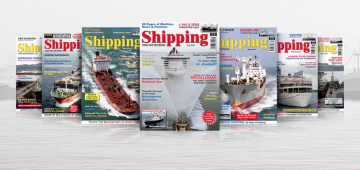



Comments
Sorry, comments are closed for this item